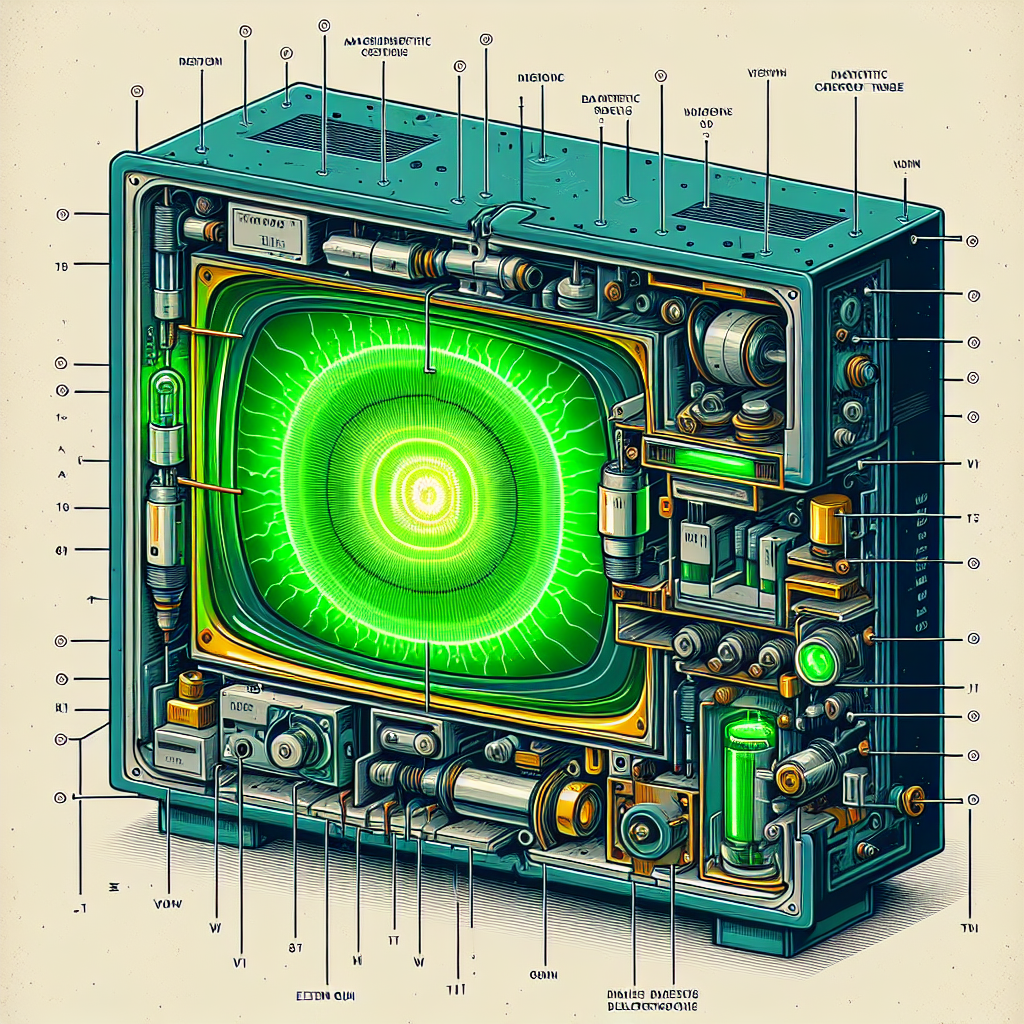Cathode Ray Tube (CRT) technology has a rich history in the field of electronics and displays. One of the key components of a CRT is the phosphorescent screen, which is instrumental in displaying images on the screen. Understanding the function and significance of the phosphorescent screen can offer insights into how CRTs have been utilized for decades.
Introduction to CRT Technology
Before diving into the specifics of the phosphorescent screen, it is essential to understand what a CRT is. A CRT is an analog display device that was once the mainstay of television and computer monitor technology. It operates by directing a beam of electrons onto a coated glass screen to produce images.
What is a Phosphorescent Screen?
The phosphorescent screen in a CRT is the part of the display that emits light when struck by electron beams. This screen is coated with phosphor compounds. Phosphors are substances that exhibit the phenomenon of phosphorescence, which is the ability to emit light after being energized.
How the Phosphorescent Screen Works
The working principle of the phosphorescent screen involves several steps:
- Electron Gun: The CRT contains an electron gun that emits electron beams.
- Acceleration: These electrons are accelerated and directed towards the screen by an electrical field.
- Impact: The electron beams strike the phosphor-coated screen.
- Light Emission: Upon impact, the phosphor molecules are excited and emit visible light.
This process happens rapidly, allowing for the creation of moving images on the screen.
Types of Phosphors Used
Various types of phosphors are used in CRT screens, depending on the desired color and application. Common types include:
| Phosphor Type | Color Emitted | Common Application |
|---|---|---|
| Zinc Sulfide (ZnS:Ag) | Blue | Oscilloscopes |
| Cadmium Sulfide (CdS:Cu) | Green | Monochrome Displays |
| Europium-doped Yttrium Oxide (Y2O3:Eu) | Red | Color Televisions |
Advantages and Disadvantages
Advantages
- High Brightness: Phosphorescent screens are capable of producing extremely bright images, which are useful in various lighting conditions.
- Vibrant Colors: The use of different phosphor materials allows CRTs to display a wide range of vibrant colors.
- Fast Response Time: CRTs can change images quickly without lag, making them suitable for fast-moving content such as video games.
Disadvantages
- Bulkiness: CRTs are heavy and bulky compared to modern flat-panel displays.
- Energy Consumption: They consume more power than LCD or LED displays.
- Heat Production: CRTs generate a considerable amount of heat during operation.
Applications of Phosphorescent Screens
The primary application of phosphorescent screens is in display devices like televisions and computer monitors. However, they have also been used in other fields:
- Oscilloscopes: Used in electronics labs to visualize electrical signals.
- Medical Imaging: Older X-ray machines employed CRTs for displaying images.
- Radar Systems: Used in early radar systems for visually representing data.
Modern Alternatives
With the advent of new technologies, CRTs have largely been replaced by flat-panel displays such as LCDs and OLEDs. These modern alternatives offer several benefits over CRTs, including:
- Reduced Size and Weight
- Lower Power Consumption
- Higher Resolution
- Better Environmental Impact due to reduced toxic materials
Conclusion
The phosphorescent screen in a CRT is a marvelous piece of technology that paved the way for modern electronic displays. Though largely obsolete now, the principles of its operation continue to influence how we design and understand new display technologies. Whether for historical interest or a deeper understanding of electronics, the study of phosphorescent screens remains a fascinating topic.

